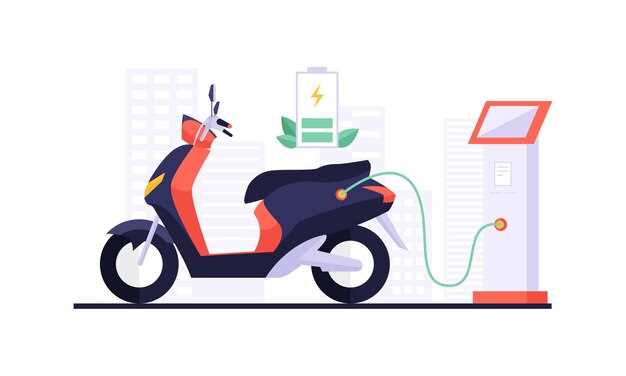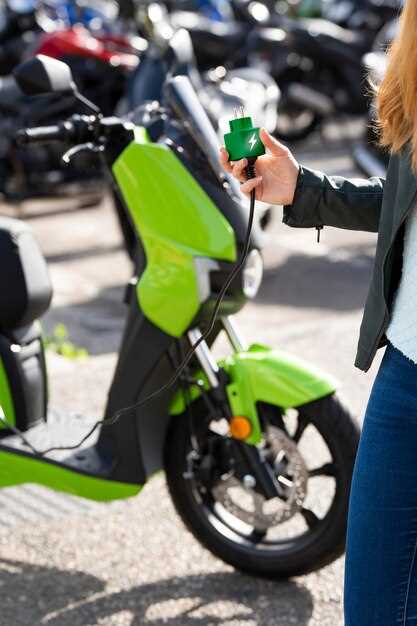
The increasing demand for sustainable transportation has led to the rise of electric vehicles (EVs), including electric motorcycles. As cities around the globe strive to reduce carbon emissions and combat climate change, government initiatives are pivotal in promoting this shift. One of the most effective measures being employed is the implementation of rebate programs designed to incentivize consumers to make the transition to electric motorcycles.
Rebates serve as financial incentives for potential buyers, effectively lowering the initial cost of purchasing an EV. This not only makes electric motorcycles more accessible but also encourages consumers to consider them as a viable alternative to traditional gas-powered vehicles. By offsetting a portion of the purchase price, these government-backed rebates can substantially enhance the affordability of electric motorcycles, stimulating their adoption among a broader audience.
In addition to financial benefits, government support for electric motorcycle purchases reflects a larger commitment to fostering a more environmentally responsible transportation ecosystem. With various state and federal programs established, the push for EV adoption is indicative of the growing recognition of the importance of sustainability. As individuals and businesses consider the shift to electric mobility, understanding the dynamic landscape of available rebates and incentives can play a crucial role in their decision-making process.
Understanding EV Rebates: Eligibility and Application Process

Electric motorcycle rebates are government incentives aimed at encouraging the adoption of electric vehicles (EVs). These rebates can significantly reduce the upfront cost of purchasing an electric motorcycle, making it a more viable option for consumers. However, understanding the eligibility criteria and application process is crucial to successfully receiving these rebates.
Eligibility for EV rebates typically depends on several factors, including the type of motorcycle being purchased, the buyer’s residency status, and the specific rebate program in question. Most programs target new electric motorcycles, and buyers may need to ensure their vehicle meets particular specifications, such as battery capacity or manufacturer benchmarks. Additionally, some programs require that the motorcycle is registered for use within the same state or region offering the rebate.
The application process generally involves several straightforward steps. First, potential buyers need to research available rebates, as programs can vary significantly between states or municipalities. Once the appropriate program is identified, applicants must gather necessary documentation, which may include proof of purchase, vehicle specifications, and sometimes proof of residency.
After assembling the required documentation, applicants usually complete a submission form provided by the rebate program. This form often requires details about the motorcycle, including its make, model, and VIN (Vehicle Identification Number). Some programs allow online submissions, while others may require sending documents via mail.
It is essential to pay attention to deadlines as many rebate programs operate on a first-come, first-served basis. Once the application is submitted, it typically takes several weeks for processing. Successful applicants will receive their rebate, often as a check or direct deposit, reducing the overall cost of their electric motorcycle purchase.
In conclusion, understanding the nuances of EV rebates is vital for potential buyers of electric motorcycles. By ensuring eligibility and carefully following the application process, consumers can take advantage of these incentives and contribute to a more sustainable future.
Financial Benefits of Electric Motorcycles: Comparison with Traditional Models
Electric motorcycles (EVs) offer numerous financial advantages compared to traditional gasoline models. The following comparisons highlight key areas where savings and benefits are most prominent.
-
Fuel Costs:
Electric motorcycles generally have lower fueling costs. While traditional motorcycles rely on gasoline, EVs use electricity, which is often significantly cheaper per mile. This cost differential can lead to substantial savings over time.
-
Maintenance Expenses:
Maintaining an electric motorcycle is usually less expensive due to fewer moving parts. Traditional models require regular oil changes, air filter replacements, and other maintenance tasks that can add up. In contrast, EV motorbikes have fewer components, resulting in lower maintenance costs.
-
Tax Incentives:
Many governments offer tax credits or rebates for purchasing electric motorcycles. These financial incentives can significantly reduce the initial purchase price, making EVs more accessible.
-
Insurance Rates:
Electric motorcycles may benefit from lower insurance premiums. Some insurance companies provide discounts for EVs due to their lower accident rates and reduced chances of theft.
-
Resale Value:
As the market for electric vehicles expands, electric motorcycles are likely to retain their value better than traditional models. Increased interest in eco-friendly options can enhance resale potential.
In summary, the financial benefits of electric motorcycles compared to traditional models can lead to significant long-term savings. With lower fuel costs, reduced maintenance, tax incentives, lower insurance rates, and better resale value, EVs present a compelling choice for riders looking to minimize their expenses while enjoying the advantages of modern technology.
State-Specific Incentives for Electric Motorcycle Buyers: A Breakdown

In recent years, many states in the U.S. have implemented specific incentives to encourage the adoption of electric vehicles (EVs), including electric motorcycles. These incentives often come in the form of rebates, tax credits, and exemptions that can significantly reduce the overall cost of purchasing an electric motorcycle.
For example, California offers a robust rebate program through the Clean Vehicle Rebate Project (CVRP), which provides up to $750 for electric motorcycle buyers. This state-specific incentive aims to promote cleaner transportation options and reduce air pollution.
In New York, prospective electric motorcycle owners can take advantage of the NY State rebate program, which offers up to $2,000 off the purchase price. Additional benefits include reduced registration fees and exemptions from sales tax, making electric motorcycles more affordable for residents.
Texas has also entered the fray with its EV rebate program, providing up to $2,500 for motorcycles that meet specific criteria. The Lone Star State promotes electric motorcycles as a sustainable alternative, contributing to the reduction of greenhouse gas emissions.
Other states, such as Oregon and Colorado, have implemented local incentives that can include grant programs for electric motorcycles and tax deductions. Oregon offers a rebate of up to $1,500 alongside additional funding for low-income residents, allowing for broader access to electric motorcycle ownership.
It is essential for potential buyers to research state-specific incentives before making a purchase, as benefits vary widely by location. Utilizing these rebates effectively can lead to substantial savings, making electric motorcycles a more viable option for a larger segment of the population.

